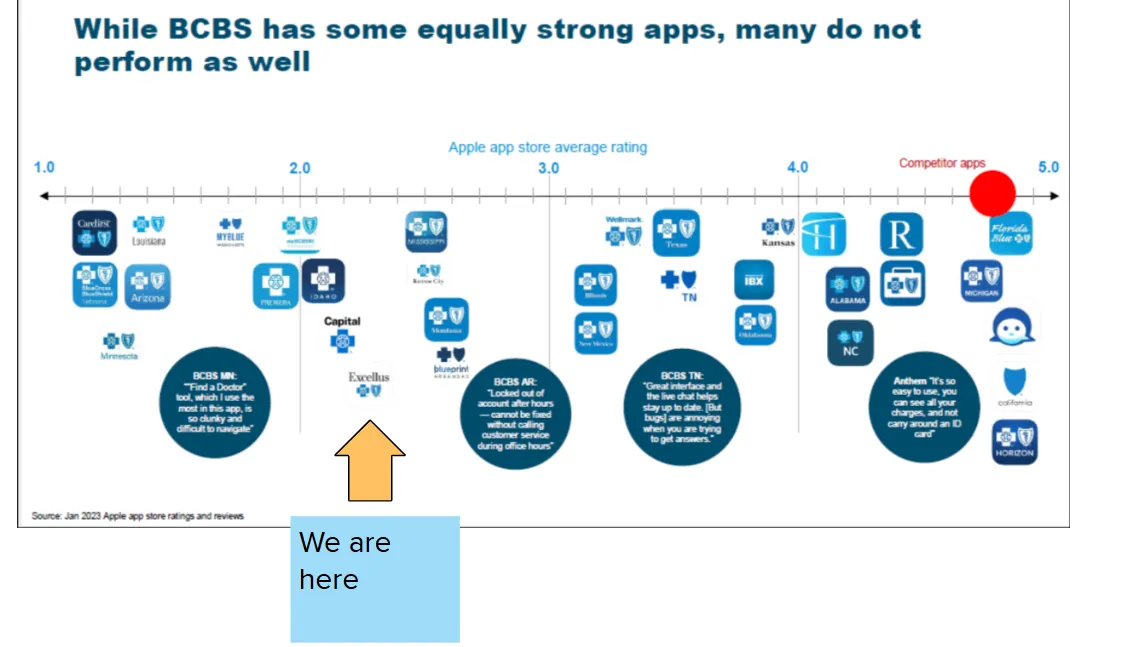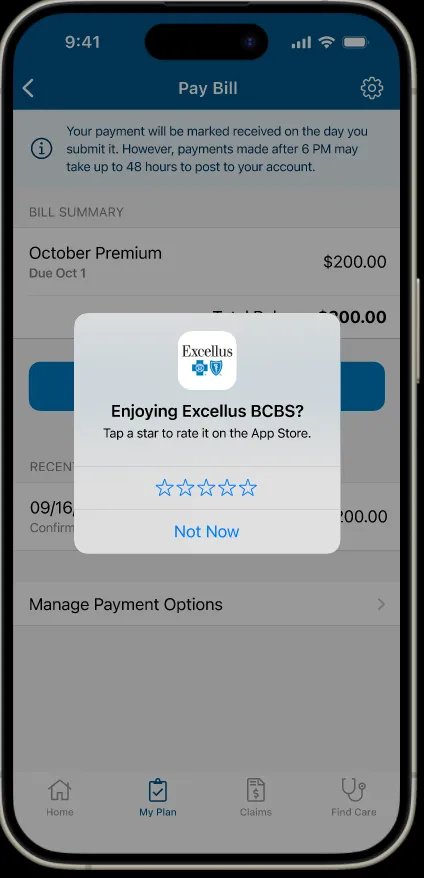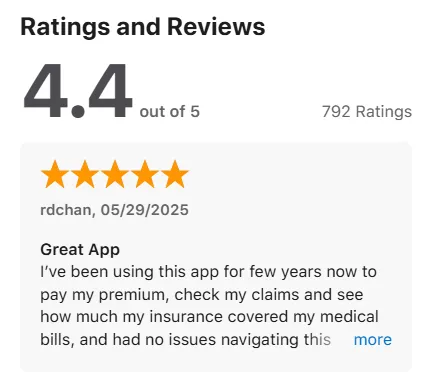Turning a 2.3-Star App into a 4.2-Star Success in 6 Months
Summary
A targeted UX research initiative transformed the Excellus member mobile app from a low-rated, stagnant product into a top-rated tool — increasing ratings, driving new downloads, and restoring user trust.
The Challenge
Initial State (January 2024):
- App Store rating: 2.3/5

- Downloads stagnant
- Negative reviews dominated perception — even after technical issues were fixed
❝Terrible App. Both the Excellus app and website are pretty bad. The app provides so little functionality.❞
The app had overcome early technical issues, but the public ratings and reviews didn’t reflect improvements — deterring potential users.
Business Goals:
- Raise the rating to 4.0+
- Increase downloads by 10%
Research Approach
Methods:
- App Store review analysis — identified lingering perception issues from old bugs
- App analytics — showed current user success rates were high
- In-app survey — revealed a 4.1 average rating among active users
- User interviews — uncovered that satisfied users weren’t posting reviews
Insight:
A perception gap existed between current product quality and public reputation.
Strategy
We introduced contextual review prompts triggered immediately after successful tasks, such as:
- Paying a bill
- Checking a claim status

Why it worked:
- Leveraged moments of satisfaction
- Low friction, opt-in design
- Did not interrupt workflows
Results
Ratings Trend:
- Ratings: 2.3 → 4.2 in 6 months
- Downloads: +12%
- Boosted brand trust and increased conversions from app store visitors
- Average Rating is 4.4 stars as of October 2025

Lessons Learned
- Early negative reviews can outlast the problems that caused them
- Timely, positive user prompts can reshape public perception quickly
- Small, strategic UX changes can have high ROI with minimal development effort
Next Step: Collaborate with marketing to highlight app–website feature parity and maintain strong ratings.
Key Impact
This project delivered measurable user satisfaction improvements, aligned directly with business objectives, and provided a repeatable model for reputation recovery through UX strategy.